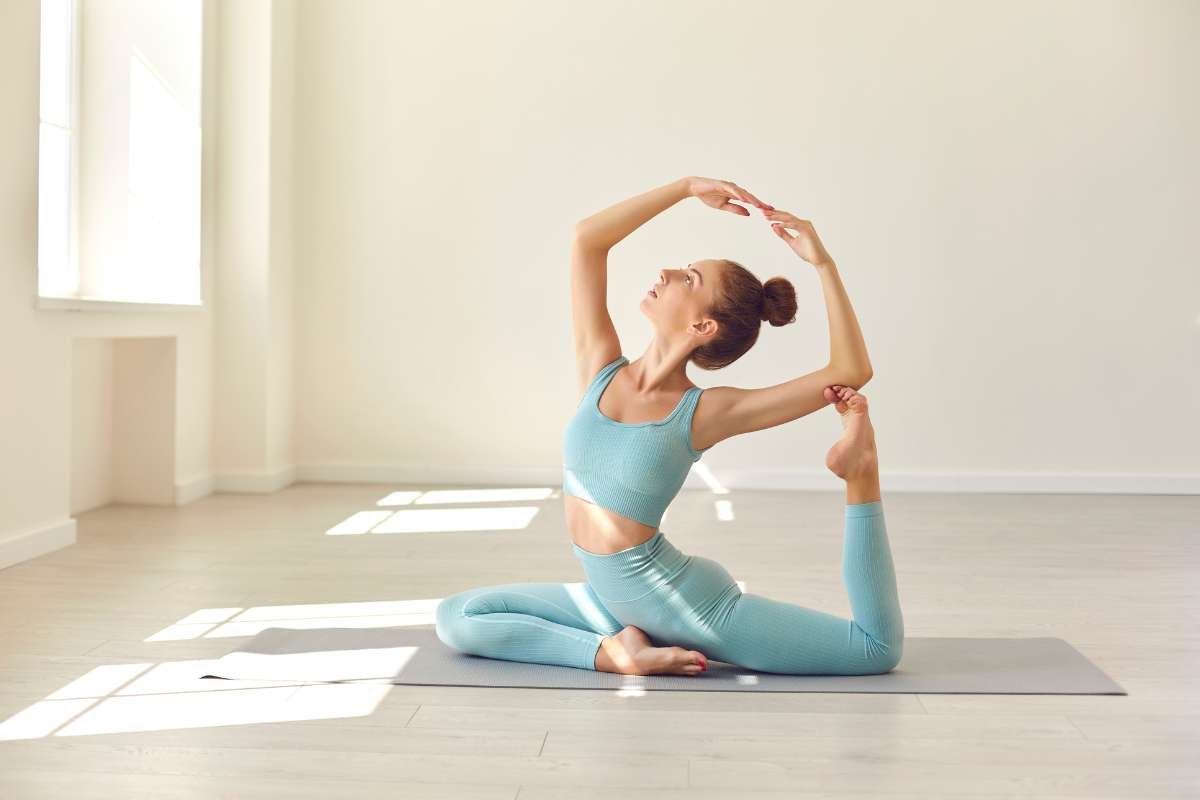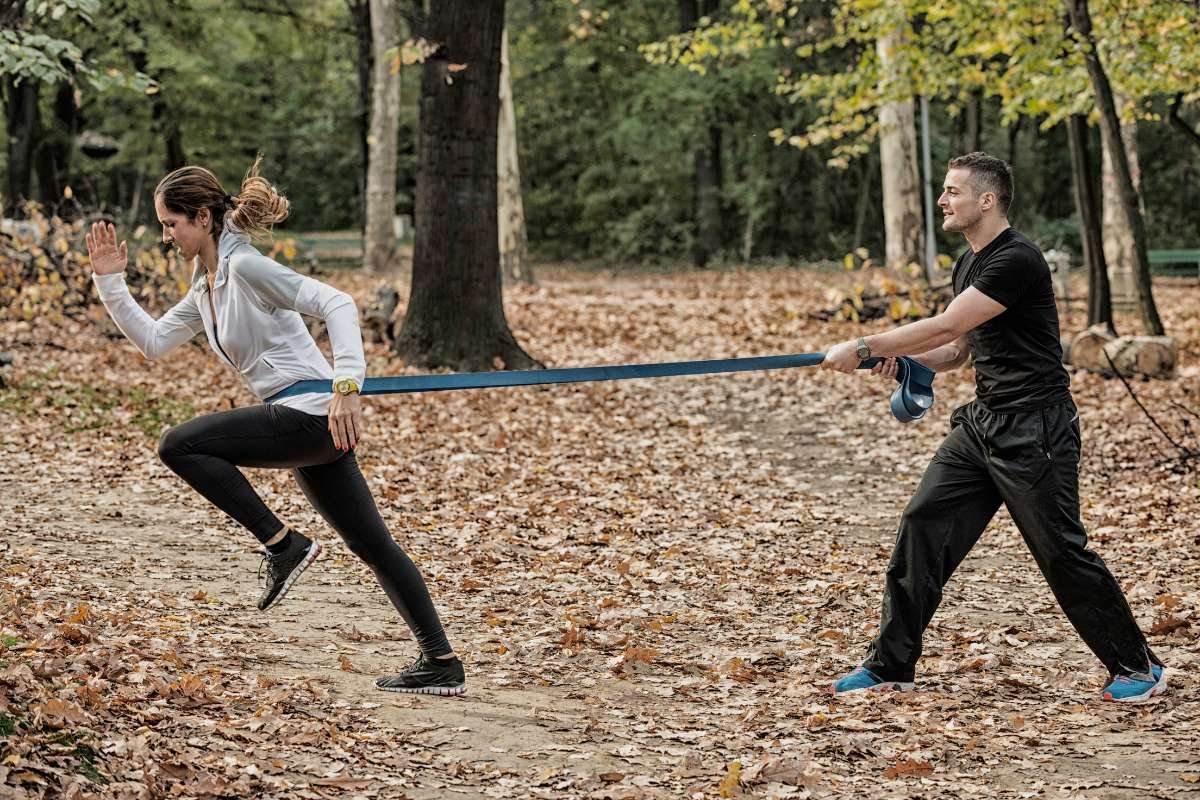Among the main components of physical well-being is flexibility, which helps in recovering from muscle soreness and preventing injuries, thereby enhancing mobility. It would be beneficial for everybody-whether athlete, fitness-oriented, or simply in pursuit of improving mobility-to include yoga into one’s schedule. The types of yoga poses for flexibility help to relieve muscle stiffness, enhance range of movement, and encourage relaxation. The article discusses some great poses for flexibility in yoga that will benefit you.
The Benefits of Yoga for Flexibility
Yoga is an ancient practice that enhances both the body and mind. One of its primary benefits is its ability to improve flexibility over time. Regular practice of yoga poses for flexibility can help:
- Reduce muscle stiffness: Sitting for long hours or engaging in intense workouts can lead to tight muscles. Yoga stretches them out and increases blood flow.
- Improve posture: Many yoga poses strengthen the back, shoulders, and core, helping to align the spine correctly.
- Enhance mobility: Greater flexibility allows for better movement in everyday activities and sports.
- Prevent injuries: Tight muscles are more prone to injury, and yoga helps lengthen and loosen them.
- Relieve stress and tension: Yoga encourages deep breathing and relaxation, reducing mental and physical tension.
Best Yoga Poses for Flexibility
1. Downward-Facing Dog (Adho Mukha Svanasana)
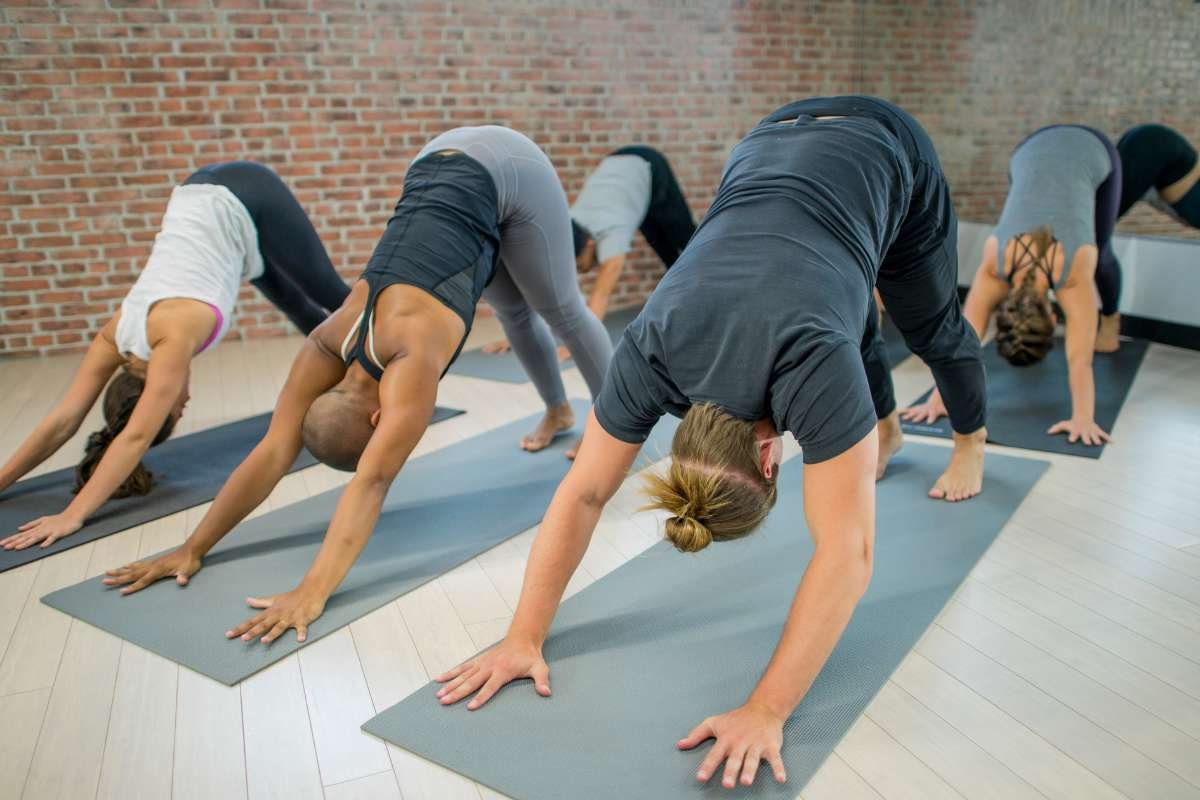
One of the most popular yoga poses for flexibility, Downward-Facing Dog extends the hamstrings, calves, shoulders, and spine. This pose also engages the arms and legs and aids circulation.
How to do it:
- Begin on all fours with hands shoulder-width apart and knees hip-width apart.
- Lift your hips toward the ceiling, straightening your legs as much as possible.
- Press your heels towards the floor and keep your head relaxed between your arms.
- Hold the position for 30 seconds to a minute while breathing deeply.
2. Standing Forward Bend (Uttanasana)
This pose deeply stretches the hamstrings, calves, and lower back. It also promotes relaxation and calms the nervous system.
How to do it:
- Stand with feet hip-width apart.
- Bend forward at the hips, keeping your spine straight.
- Place your hands on the floor, ankles, or shins.
- Hold for 30 seconds, inhaling deeply.
Also Read: 8 Benefits of Practicing Yoga
3. Cobra Pose (Bhujangasana)
The Cobra Pose is great for stretching the spine, expanding the chest, and enhancing flexibility in the back.
How to do it:
- Lie on your stomach with your hands under your shoulders.
- Press into your palms and push your chest up while keeping your elbows slightly bent.
- Hold for 15-30 seconds and slowly lower down.
4. Butterfly Pose (Baddha Konasana)
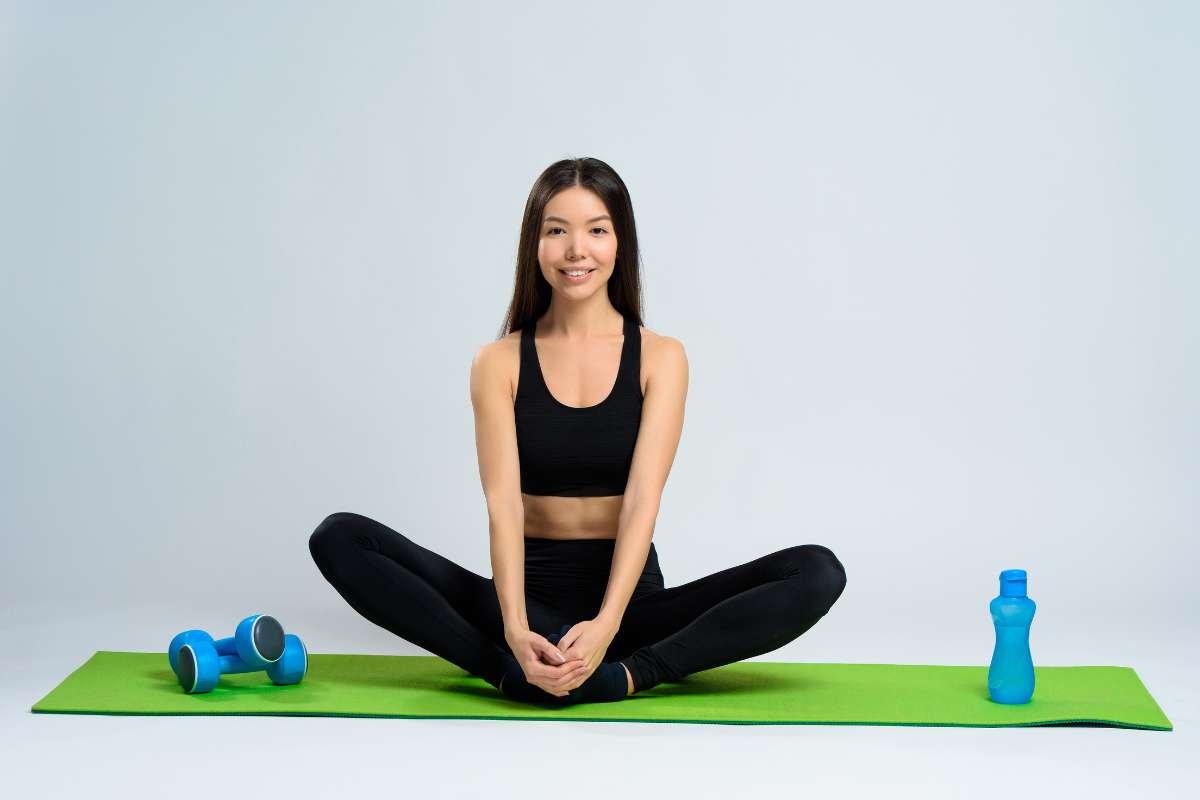
Seated posture that is ideal for opening the hips and increasing flexibility in the inner thighs and groin.
How to do it:
- Sit with your legs bent and the soles of your feet together.
- Hold your feet and push your knees gently towards the floor.
- Hold for 30 seconds to a minute.
5. Seated Forward Bend (Paschimottanasana)
This pose stretches the spine, hamstrings, and lower back, making it one of the most effective yoga poses for flexibility.
How to do it:
- Sit with your legs extended straight out in front of you.
- Take a deep breath in, then exhale as you fold forward from the hips.
- Try to reach for your toes keeping the back straight.
- Hold for 30 seconds to a minute.
6. Pigeon Pose (Eka Pada Rajakapotasana)
This pose is great for increasing flexibility in the hips, glutes, and lower back.
How to do it:
- Begin in a tabletop position and bring forward one knee, placing it behind your hands.
- Straighten the opposite leg behind you.
- Lower your torso over your bent leg and rest your forehead on the ground.
- Hold for 30 seconds to a minute on each side.
7. Child’s Pose (Balasana)
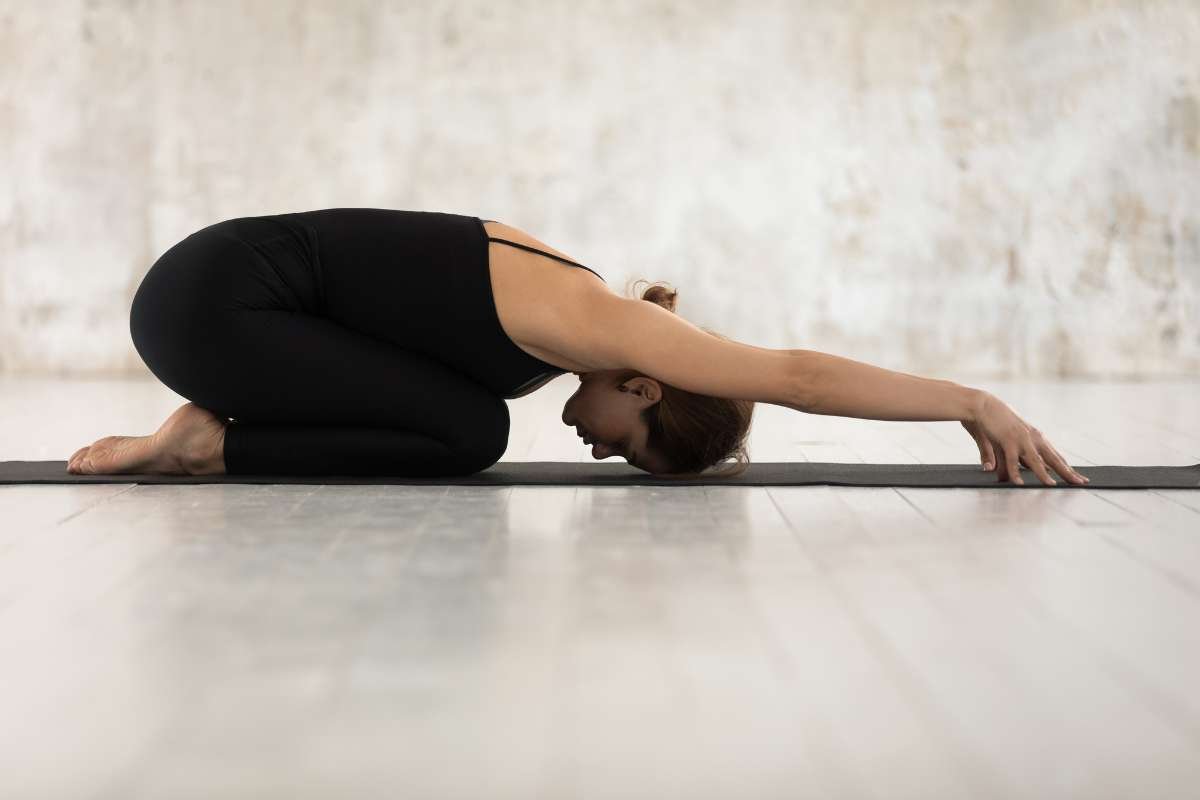
Child’s Pose is a gentle back, hip, and shoulder stretch. It loosens tension and increases flexibility in the spine.
How to do it:
- Kneel on the floor and sit back on your heels.
- Stretch your arms forward and place your forehead on the mat.
- Hold for as long as comfortable.
Also Read: 11 Surprising Benefits of Yoga for Your Mind and Body
Tips for Enhancing Flexibility Through Yoga
- Practice regularly – Flexibility is created over time. Shoot for a minimum of 3-4 practice sessions a week.
- Breathe deeply – Deep breathing relaxes muscles and increases stretch depth.
- Warm up before practice – Gentle stretching and movement pre-yoga can avoid injury.
- Don’t overstretch – Never push a stretch farther than is comfortable for you; progress will be natural.
- Avoid dehydration – Staying hydrated retains muscle elasticity.
- Include dynamic movements – Flowing sequences like Sun Salutations improve flexibility in the long run.
Also Read: Understanding Hip Flexors: Causes, Symptoms, and Solutions
Final Thoughts
Yoga poses for flexibility provide a surefire and organic solution to expand the range of motion, decrease rigidity, and advance overall well-being. Consistently performing the poses allows you to systematically broaden your scope of motion and move more effortlessly within your frame. As a new practitioner or advanced yogi, adding flexibility-focused yoga into your practice will produce long-term advantages. Get a hold of that stretch, take a few breaths, and savour the path toward an increased healthier flexibility.

